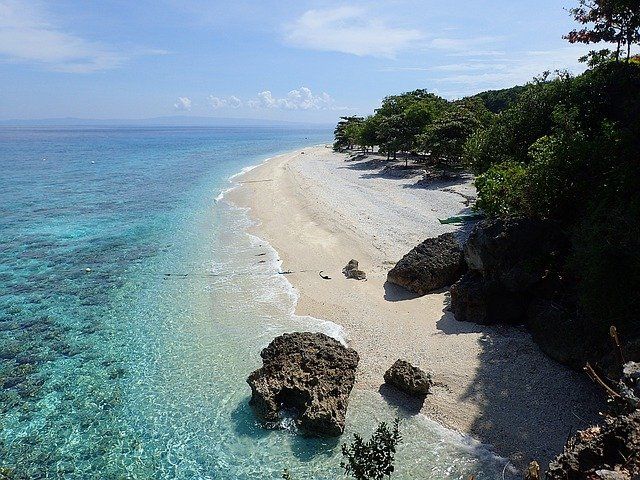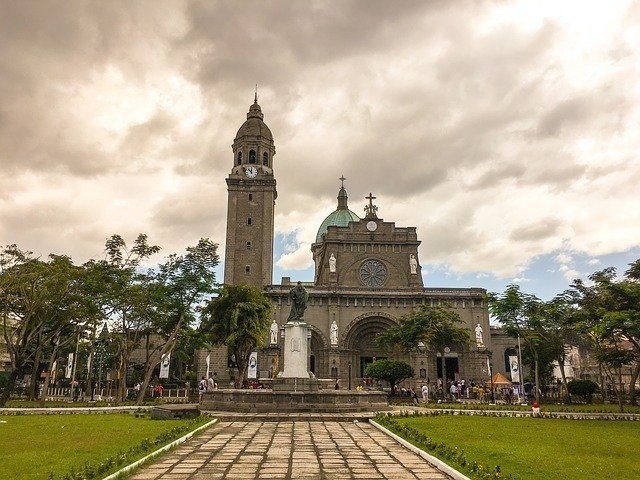
The Philippines were named after Philip II of Spain (husband of ‘Bloody Mary’ and the king of the Spanish Armada). This group of islands was discovered for Spain during the ill-fated journey of Ferdinand Magellan, who set out to find a westerly route to the spice islands, which were then controlled by Portugal. Magellan was the first European to sail round the southern tip of South America and into the Pacific Ocean. He and his men arrived off the island of Cebu in the Philippines in 1521. This was the same year that Martin Luther stood before Charles V at the Diet of Worms and uttered his famous words, ‘My conscience is captive to the Word of God . . . here I stand!’
Conquests
By 1565 the Spaniards had sent Miguel Lopez de Legaspi from Mexico to conquer and hold the Philippines for Spain. The population of Malays, along with some mountain negritos, were largely animist. Islam had also arrived and its influence was felt in the south, in places like Manila. As they had done in the Americas, the Spaniards sought gold, glory and God, probably in that order.
However, the atrocities they committed in Central and South America were not repeated in the Philippines. It seems that the Spanish conquerors met little resistance and the native population soon turned to the religion of the white men. The idols and superstitions of past religions gave way to the idols and superstitions of Roman Catholicism. The Philippines remained under Spain from 1565 until 1898. During that time no Protestant missionary work was allowed, although there are nineteenth-century records of smuggled Bibles being read avidly by the few who had the ability to do so.

American rule
As a result of the Spanish-American war of 1898, the Philippines were seceded to the USA. Admiral Dewey had sailed his battleship into Manila Bay and sunk the obsolete Spanish fleet. With the aid of the Filipinos, who were already in revolt against the Spanish, he was able to capture Manila.
The Filipinos at first welcomed the Americans as liberators, but they soon found they had shaken off one colonial power only to come under the dominion of another. The struggle for independence from foreign colonial rule now continued against the Americans and only ended after several years of bloody conflict. The Americans prevailed by virtue of their better equipped and more disciplined war-machine.
However, the Americans proved to be a better colonial power than Spain. They began to include Filipinos in the running of the country, preparing them for eventual self-government. Nevertheless, it is true that paternalism and self-interest permeated American policy. This state of affairs continued until the Japanese invasion of 1941.
Missionaries
The arrival of the Americans in 1898 had two effects. Firstly, it opened up the Philippines for the preaching of the gospel. It is believed that the first public proclamation of the gospel was by an American army chaplain in August 1898. American missions later divided up the islands in a comity agreement and planted ‘evangelical churches’ (called just that – with the denomination in brackets). Many of the early missionaries were obviously true Christians and laboured greatly for the gospel of Christ.
However, this was also the period when modernism was invading the mainline denominations, and its harmful impact was soon felt in the Philippines. More emphasis began to be placed on social concern than on the gospel, and it was not long before the Bible began to be doubted in the churches.

Roman Catholicism in retreat
Secondly, Roman Catholicism suffered a serious setback with the overthrow of Spain. The Americans were free to implement separation of Church and State. Gregorio Aglipay led a revolt against the Roman Catholic Church, which was associated with the old Spanish Conquistadores, and set up the Philippine Independent Church – a Roman Catholic look-alike, but without the pope and Spain. At first this church grew rapidly, but the Roman Catholics won a long drawn-out court battle for the church buildings taken over by the Independents. These buildings now reverted to Rome, and most of their congregations went along with the buildings.
Slow progress
During the twentieth century, Protestantism made slow progress throughout the islands, with the major evangelical work being carried on by the Christian and Missionary Alliance in the south, and then by the mission arm of the Regular Baptists during the 1930s. After the Pacific war, and the defeat of Japan, there was a new influx of evangelical missions. Some of these, like the China Inland Mission (Overseas Missionary Fellowship), had been forced out of China by the communist take-over there. Others were the result of American GIs located in the Philippines at the end of the war. Some who were Christians returned to the United States and then returned to the Philippines as missionaries. They came with new interdenominational mission boards or as part of new evangelical groupings recently broken away from the modernism of the mainline denominations. Today the Philippines has a large number of foreign missionaries, predominantly from the USA. These reflect every shade and opinion of the American religious scene.



